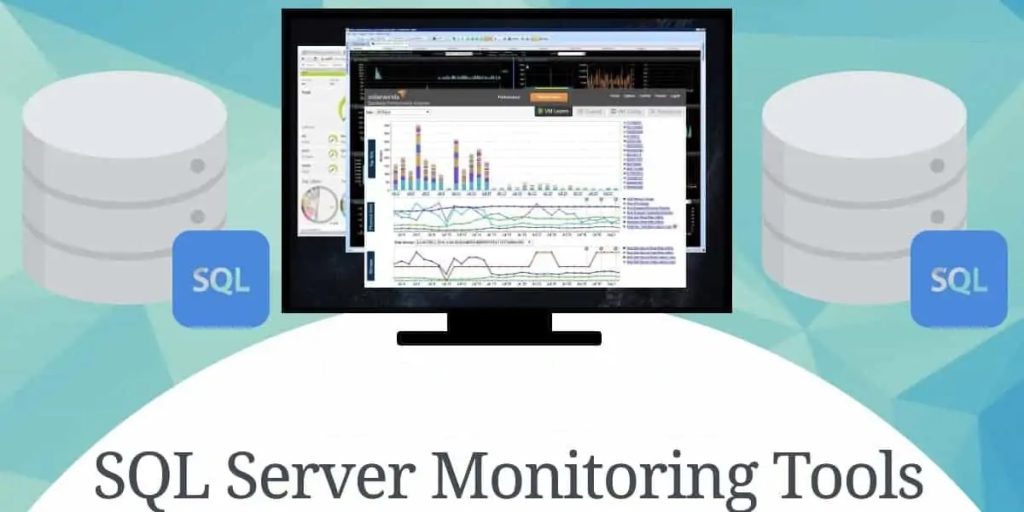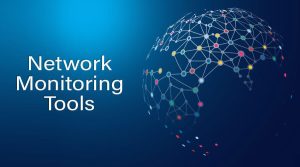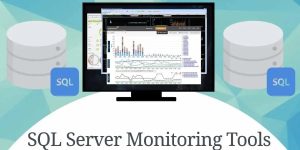10 Tools for SQL Server Monitoring compared

Databases are crucial components of the infrastructure of any modern organization. They not only store the data needed to support internal operations but also provide the foundation on which every interaction with your customers and suppliers is based.
Payroll, stock keeping, incoming orders, customer information, user-generated content, and every single imaginable piece of information your organization depends on will, at some moment, be stored on or retrieved from a database.
To manage those fundamental resources, we often employ database management systems (DBMSs) which allow us to store, query, update, or correlate information quickly and efficiently. There are many DBMSs available on the market, with Microsoft SQL Server (or MSSQL, for short), originally released in 1989 for the OS/2 operating system, being currently the third most popular in the segment.
Your MSSQL instances need to be always available and running at their best performance.
To ensure this, you can employ SQL Server monitoring tools, which are a valuable asset in helping you prevent, diagnose and solve various issues. In this article, we will present some of the many options available and hope to help you choose the best one for your needs.
Frequently Asked Questions about SQL Server Monitoring
What are SQL Server Monitoring tools?
SQL Server Monitoring Tools are tools designed to monitor the status, internal parameters, and performance of instances of the Microsoft SQL Server, a Relational DBMS (RDBMS) developed by Microsoft.
They may range from simple tools designed to query availability and uptime to more complex solutions which can keep track of query execution time and other performance-related parameters of a database server.
Keep in mind that most RDBMSes support the Structured Query Language (SQL) and may be colloquially (and erroneously) referred to as “SQL Servers”. However, they are not related to the Microsoft product and do not fall under the scope of this article.
Why should you invest in SQL Server Monitoring?
There are many reasons to invest in SQL Server Monitoring. Here are five of them, in no particular order.
- Proactive maintenance: monitoring allows you to detect and fix potential issues before they become critical and result in outages that may affect the performance of your application or even the profitability of your business.
- Performance optimization: constant monitoring can help you pinpoint issues and identify opportunities for optimization that will improve the performance of your database and applications.
- Regulatory compliance: businesses that handle sensitive information, like financial or healthcare data, need to meet strict regulatory standards that specify how this information is stored and handled. Monitoring will allow you to prove compliance with these standards and secure approvals that may be crucial for your business to keep running.
- Resource allocation: find out where resources are being underutilized or overutilized, allowing you to redistribute them according to real needs to ensure the most effective usage of your systems.
- Security: monitoring allows you to spot early signs of uncommon behavior or usage patterns that may be indicative of an intrusion attempt or ongoing attack, giving you time to react and deploy countermeasures before a data breach occurs.
What to look for when choosing a SQL Server Monitoring Tool?
There are 5 main features you need to look out for when choosing a SQL Server Monitoring tool.
- The capability to monitor many aspects of your servers at once.
- A centralized display of information from many sensors for better observability.
- Customizable alerts and automated notifications when alerts are triggered.
- Native and automated reporting features.
- A free trial period, so you can attest to how the tool works with your network infrastructure.
How to do SQL Server Monitoring?
There are many SQL server monitoring tools, from as many different vendors, which may focus solely on a single aspect of the task or offer this capability as a subset of a broader range of features. We present a few of them below, in no particular order.
The best SQL Server Monitoring Tools
Paessler PRTG
Paessler PRTG is the Swiss army knife of the monitoring world. PRTG is based on basic monitoring elements called “sensors”. One sensor usually monitors one measured value in your network, e.g. the traffic of a switch port, the CPU load of a server, the free space of a disk drive, and so on.
PRTG comes with more than 250 built-in sensors for a wide variety of tasks, device types, and use cases, so you would be hard-pressed to find something that you can’t monitor. Plus, you can mix and match sensors, and even deploy custom ones, to create monitoring solutions specific to your needs.
Many sensors for SQL server monitoring are included with PRTG. The Microsoft SQL v2 sensor monitors a database on a Microsoft SQL server and executes a query, reporting back the number of affected rows and the execution time of the query. There is also a set of WMI Microsoft SQL Server sensors, which use the Windows Management Interface (WMI) to report data on instances of SQL Server 2008, 2012, 2014, 2016, 2017, and 2019.
This includes counters related to access methods, buffer manager, memory manager, and locks, as well as general performance counters and SQL statistics such as batch requests, SQL compilations, and SQL re-compilations (per second).
The information gathered by PRTG is shown on a centralized dashboard with all the relevant metrics. You can set alerts based on threshold values, with notifications delivered by text (SMS) or email if those values are exceeded. There is also an automatic reporting feature, so you can keep management and co-workers informed.
PRTG runs on Windows Server 2012 R2, 2016, 2019, 2022, or Windows 11, and there are mobile apps for Android and iOS. There is a 30-day free trial of PRTG, with all features available during this period, no credit card is needed.
ManageEngine Applications Manager
The ManageEngine Applications Manager suite of monitoring tools includes a module that can monitor all the key metrics of an SQL Server, including memory and CPU utilization, locks, indexes, buffers and cache, SQL queries, replication, and jobs and session details.
The SQL queries analysis module shows top queries by CPU or by I/O, top waits by waiting tasks, top slow-running queries, most frequently executed queries, and most blocked queries, helping DBAs find the queries that most affect performance and the cause of the issue, like improper indexing or bad caching.
This tool is also available as a mobile app for iOS and Android, with features such as an overview of all monitors, groups, and subgroups with availability and health status, notifications for critical and warning alarms and push notifications for health and availability alerts. There is also a mobile web client, suitable for any smartphone with a modern web browser.
Among the tools mentioned in this article, ManageEngine Applications Manager distinguishes itself by supporting the most versions of Microsoft SQL Server, including 2000, 2005, 2008, 2008 R2, 2012, 2014, 2016, 2017, and 2019.
It runs on Windows Server 2012 R2, 2016, 2019, 2022, Windows 10 or Windows 11, and also on Linux distributions like CentOS, Debian, Fedora, openSUSE, Oracle Linux, Red Hat Enterprise Linux (7 and 8), SUSE Linux Enterprise and Ubuntu. There is a 30-day free trial available.
Idera SQL Diagnostic Manager
According to Idera, their SQL Diagnostic Manager for SQL Server “provides robust SQL Server monitoring functionality that covers the performance of the entire SQL Server environment”, helping you monitor physical, virtual, and cloud environments, track queries and plans to fix blocks and locks, and alert predictively.
It can continuously monitor servers’ performance and tailor your monitoring with custom counters. It can also manage jobs (including success, failure, cancellation, or retry) and even monitor the CPU, disk space, and memory usage of the machine running SQL Server, avoiding issues caused by constrained resources.
SQL Diagnostic Manager comes with “over 100 predefined alert settings based on industry best practices”, and allows you to tailor alerts to different groups of people based on metrics, time of day, and instances. With the “maintenance mode”, your team can selectively disable monitoring and alerting features during scheduled maintenance windows, avoiding false positives.
The tool can be deployed via a web browser, avoiding the need to install diagnostic consoles and allowing access to real-time and historical data even on mobile devices.
The Idera SQL Diagnostic Manager requires Windows Server 2012, 2012 R2, 2016, 2019, or 2022, and can monitor SQL Server 2014, 2016, 2017, 2019, and 2022. There is a fully functional trial license that can monitor up to 15 SQL Server instances anywhere on your network for a period of 15 days.
SolarWinds SQL Sentry
With sophisticated query and index analysis tools, SQL Sentry goes beyond merely reporting the metrics of an SQL Server. It can help you find and fix the queries that are having the most impact on your server, find the best index to support a query, or see the impact query parameters are having on performance.
Of course, it wouldn’t be included on a list of monitoring tools if it didn’t have sophisticated monitoring capabilities. SQL Sentry can show metrics related to the machine (virtual or physical) that is hosting SQL Server, like total CPU usage, memory usage, or network traffic, or those related to the database server, such as blocked processes, average transactions per second, read and write latency, usage of allocated memory and more.
The alerting system includes Advisory Conditions, a feature “that allows for customized alerting based on performance counter metrics, query results, WMI queries, duration of events, and state changes”. This included a pack of pre-built Advisory Conditions, which can be customized to better suit the characteristics of your database environment.
SQL Sentry runs on Windows Server 2016, 2019, or 2022, Windows 8.1 or Windows 10, and can monitor instances of SQL Server 2012, 2014, 2016, 2017, 2019, or 2022. There is a free 14-day trial available.
New Relic
New Relic is a monitoring solution that can be used for Application Performance Monitoring (APM), Infrastructure Monitoring, Network Monitoring, Log Management, and more, boasting more than 500 integrations with popular tools and platforms, promising instant observability across all your stack.
Microsoft SQL Server monitoring is part of the Infrastructure Monitoring module on the platform. The integration can collect a huge number of performance-related metrics, such as the total and available page file size, number of users and active connections, number of running, suspended, or sleeping processes, available and total physical memory, number of lock requests per second, and much more.
The monitoring interface allows you to correlate infrastructure, application, and end-user telemetry and spot emerging issues in real-time. Entity-scoped maps allow you to visualize relationships between entities in your infrastructure, to isolate the source of problems impacting multiple entities.
Monitoring on New Relic is done through “infrastructure agents” running on Windows Server (2012, 2012 R2, 2016, 2019, 2022), Windows 10 and their service packs, macOS (10.15 Catalina or higher, up to 13 Ventura), and Linux distributions such as CentOS, Red Hat Enterprise Linux (RHEL), Oracle Linux, Debian, SuSE, and Ubuntu. Microsoft SQL Server versions 2014 through 2022 are supported. Free trial accounts are available.
Datadog SQL Server Monitoring
With support for more than 600 data sources and integrations, Datadog advertises full observability and increased security for your server environment, with metrics being collected to a granularity down to one-second resolution.
The SQL Server integration tracks the performance of your SQL Server instances. It collects metrics for the number of user connections, rate of SQL compilations, and more. Optionally, users can enable the Database Monitoring feature to get more insights into performance, like identifying slow queries or which ones are consuming the most time, rows updated/returned, or to filter and group queries by arbitrary dimensions such as team, user, cluster, and host.
All the data is displayed on dashboards that can be configured to “provide stakeholders with a real-time view of their infrastructure health”, with conditional alerting using a combination of metrics, events, and other data points to avoid alert fatigue, and anomaly and outlier detection features to quickly identify and troubleshoot problematic hosts.
Datadog supports Microsoft SQL Server 2012, 2014, 2016, and 2019. Monitoring is done by agents which collect and report data to cloud-hosted servers, and there are agents for Windows, all the main Linux Distributions (such as Ubuntu, SuSE, RHEL, Fedora, Centos, Amazon Linux), and even AIX. You can try Datadog free for 14 days.
AppDynamics
Developed by Cisco, AppDynamics bills itself as “the world’s only business-first observability platform”, allowing you to “spot every application issue” and pinpoint root causes of application problems in real-time, from 3rd party APIs down to code-level issues.
SQL Server Monitoring is one of the many modules and integrations available, allowing you to monitor instances of SQL Server 2000, 2005, 2008, 2012, and 2014 “running on any platform”. Like other tools, it offers real-time views into resource monitoring (like memory consumption) and analysis of performance trends (with alerts on deviation).
A SQL drill-down feature that allows for 1-click analysis and troubleshooting of queries, comprehensive performance reports, and “full visibility and correlation with SQL execution plans that display current SQL Server configuration parameters, properties, and information related to database objects including configuration values”.
Like Datadog above, monitoring on AppDynamics is agent-based. The agents require a compatible Java Virtual Machine (JVM) and Runtime Environment (JRE). The Azul JRE version 1.8 is bundled on most of the supported platforms, which include AIX, Linux (CentOS, Debian, Fedora, open SuSE leap, Red Hat Enterprise Linux, SuSE Linux Enterprise, and Ubuntu), Solaris, and Windows. There is a free 15-day trial available.
Redgate SQL Monitor
Redgate SQL Monitor offers a “single pane of glass” overview of your whole SQL Server environment, including servers, instances, and databases on-premises, on virtual machines, or on cloud providers like Azure and AWS.
One nice feature is a deployment monitor: every time you make a deployment, it is displayed on the instance timeline alongside key SQL Server metrics. This serves as a “starting line” for investigation in case you suddenly experience unusual behavior right after.
There is also a tool that can quickly find and fix deadlocks and long-running or costly queries with insights on performance details, delays caused by resource waits, the T-SQL text, and the query plan. In case of problems, there are 65 preconfigured and customizable alerts, which can be delivered to your team via email, Slack, PagerDuty, SNMP traps, or a ticketing tool via webhooks.
Redgate SQL Monitor requires Windows Server 2012, 2016, 2019, 2022, Windows 10, or Windows 11, and can monitor Microsoft SQL Server 2008 R2, 2012, 2014, 2016, 2017, 2019, or 2022 running on Windows or Linux. There is a 14-day free trial available
Dynatrace
Dynatrace offers a Microsoft SQL Server monitoring solution that can not only monitor resource usage (like CPU, memory, and disk) on a server but also does in-depth performance monitoring with historical baselining and root-cause analysis in case of issues.
This tool is capable of analyzing individual statements (reporting metrics like execution time, number of rows affected, response time, and failure rates) and flagging the most “expensive” ones, providing valuable information for your DevOps team.
A database health tool can identify common problems (like stored procedures in need of optimization), or show who else is using your database instance, and how this usage affects the performance.
Dynatrace can auto-detect your databases on Microsoft SQL Server 2008, 2012, 2014, 2016, and 2017. It supports Windows Server 2012, 2012 R2, 2016, 2019, 2022, and Windows 8.1, 10 and 11. There is a 15-day free trial available.
SolarWinds Database Performance Analyzer for SQL Server
Unlike SQL Sentry, another SolarWinds product mentioned in this article, the Database Performance Analyzer (or DPA, for short) is geared towards performance optimization. allowing you to “know exactly what’s happening in your MSSQL database, including wait times, plans, queries, resources, changes, and historical analysis”.
An anomaly detection feature, powered by machine learning, can alert your team when behavior is different from expected, and root cause analysis will help you find out why performance is bad. Tuning advisors can point to issues that need attention, and the tool can also do detailed deadlock and blocking analysis, showing not only what is being blocked, but also what is doing the blocking.
The alert and reporting system can do baselining to report performance outliers and has pre-built alerts and reports, though users can create their own as needed, including custom alerts based on any SQL query. All alerts can be delivered via email or using an SNMP trap.
DPA is based on an agentless architecture with low-performance impact, estimated by SolarWinds to be at about 1% CPU usage, allowing it to be used even on production instances. It can run on Windows Server 2012 R2, 2016, 2019, and 2022, Windows 10, Windows 11, or Linux. The supported versions of Microsoft SQL Server are 2014, 2016, 2017, 2019 and 2022. There is a free 30-day trial available.
Conclusion
Our favorite SQL Server monitoring tool is Paessler PRTG, as it “ticks all the boxes” in our list of desired characteristics. The built-in sensors cover many of the main use cases, without the need to purchase extras. And it is extensible, which means you can deploy third-party sensors, or even develop your own, to cover specific needs.
But more importantly, it streamlines your workflow by enabling you to monitor all of your infrastructure with a single tool. It can monitor your SQL Server, but also your network, services, servers, IoT devices, cloud infrastructure, and much more. It really is a “Swiss army knife” of the monitoring tools.
That means you can do away with having to rely on a variety of individualized solutions, which can carry potential risks such as conflict with your current workflow and even network security issues.




